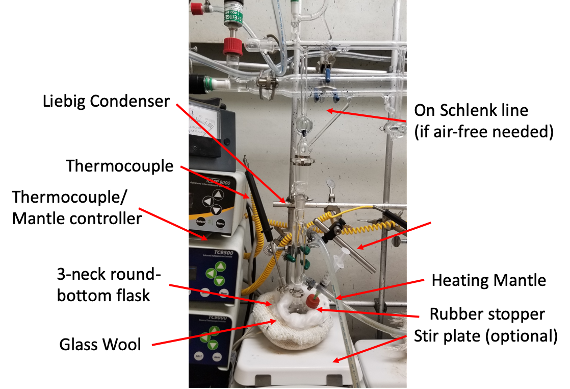


Setup the reaction as above. Place the 2D material in the round-bottom flask, evacuate and flushed with N2 gas. In a glovebox, create two stock solutions. Stock solution 1 should be 5 mL of anhydrous acetone. Stock solution 2 should be created from 0.01-0.03 g of manganese octacarbonyl dissolved in 5mL of air free acetone. Inject the stock solution 1 of anhydrous acetone into the round-bottom flask and heat to just below reflux (~45-48°C). Dropwise, inject in the manganese (solution 2) over the course of 2-3 hours (note, go slow). After all solution has been injected, allow the mixture to sit just below reflux for 1 more hour. Remove substrates or material from the solution and rinsed with hot acetone and hot ethanol, exposing to air at this point is okay.
| Mn2(CO)10 | acetone | time | ~ intercalated in Bi2Se3 |
|---|---|---|---|
| 0.01-0.03 g | Total = 10 mLs | 3 hours | 4 atm % ± 2% |
M. Wang, D. Williams, G. Lahti, S. Teshima, D. Dominguez-Aguilar, K. J. Koski, Chemical intercalation of heavy metal, semimetal, and semiconductor atoms into 2D layered chalcogenides. 2D Materials, 5, 045005 (2018)